Leaving Easter Island there are only two directions to go: either back to Santiago or on to Tahiti. Going to Tahiti is a no brainer because we are heading to New Zealand and it seems like a good place to stop for a bit of R&R as we get used to some major time changes.
Large and abundant, Tahiti is the modern travellers gateway to French Polynesia, just as it was for the late 18th Century ‘discoverers’ who used it as a natural base to explore the South Pacific. In later years the capital city, Papeete, became a shipping crossroads. Located on Tahiti’s northwest corner, the city curves around one of the region’s busiest harbours which holds enough extraordinary maritime tales to keep Hollywood going for the next century.
Having arrived very late, we spent a night on the main island down by the water’s edge. The contrast to Easter Island was immediate and very obvious. Amid the noise and bustle of insects in the grass and trees, the air was full of that exquisite fragrance of orange blossom and gardenia which is distilled by night under the thick foliage. There are no such joyous smells on barren Easter Island. The whole area is rich in flora that bursts from a lush green background in a riot of bright colour that begs for attention like a child who insists on being noticed.
Sitting amid the colour and fragrance I can imagine how Gauguin was drawn here having left his wife and six children behind in Paris. He painted many post-impressionistic masterpieces in and around the island many featuring a particular young native girl who became his muse. His paintings were obviously not appreciated by the locals at the time because he died penniless in 1903. At the time of his death one of his works sold for 150 French francs. Now, should one appear for auction, it would probably fetch US$7m! With artists there seems to be a strong correlation between death and the value of their work and, having a couple of his paintings, I wonder whether putting a contract out on Vettriano would be a good investment.
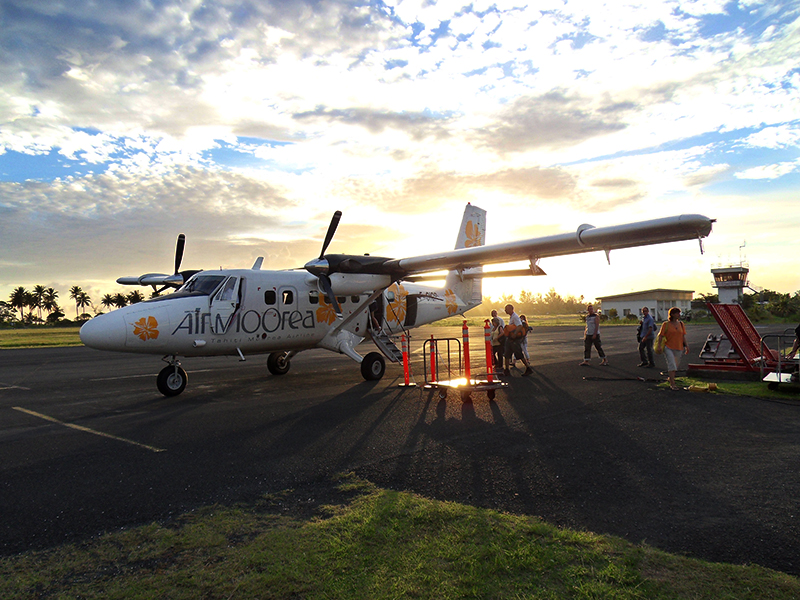 The next morning, we take a little sixteen-seater airplane for the short hop across the Sea of Moons to the Island of Mo’orea. From Tahiti, Moorea seems to have about forty separate summits: fat thumbs of basalt, spires tipped at impossible angles, brooding domes compelling to the eye. But the most striking peaks are jagged, saw-edges that look like the spines of some long lost dinosaur. It is so stunningly beautiful that it is used time and again in Hollywood films to create a South Sea setting for movies. Geologists attribute its rugged beauty to a great volcano, the northern half of which either fell into the sea or was blown away in a cataclysmic explosion leaving the heart shaped island that we see today. The remaining rim of the old crater has eroded into jagged peaks and spires that give the island its haunting, dinosaur-like profile.
The next morning, we take a little sixteen-seater airplane for the short hop across the Sea of Moons to the Island of Mo’orea. From Tahiti, Moorea seems to have about forty separate summits: fat thumbs of basalt, spires tipped at impossible angles, brooding domes compelling to the eye. But the most striking peaks are jagged, saw-edges that look like the spines of some long lost dinosaur. It is so stunningly beautiful that it is used time and again in Hollywood films to create a South Sea setting for movies. Geologists attribute its rugged beauty to a great volcano, the northern half of which either fell into the sea or was blown away in a cataclysmic explosion leaving the heart shaped island that we see today. The remaining rim of the old crater has eroded into jagged peaks and spires that give the island its haunting, dinosaur-like profile.
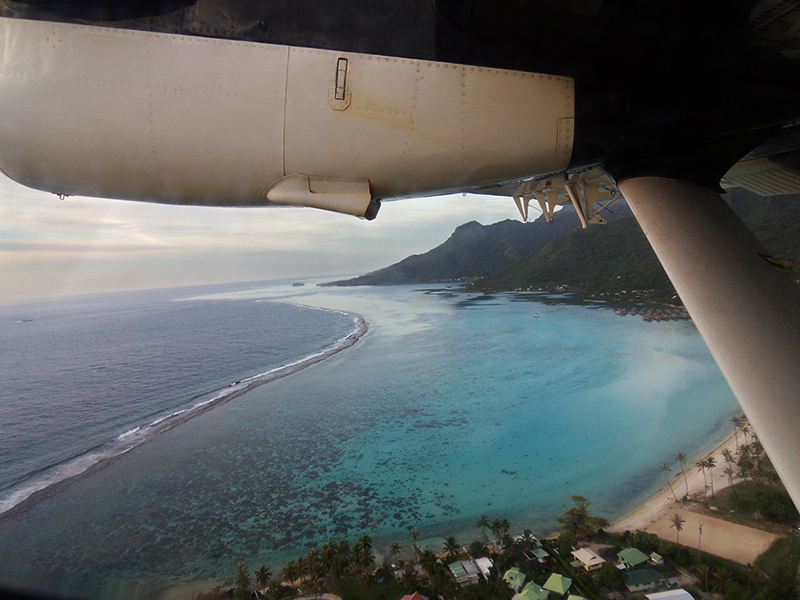 There are no towns on Mo’orea which adds to its charm. Most of the 14,000 residents live on its fringing coastal plain, many of them in little settlements where lush valleys meet a lagoon enclosed by an offshore coral reef. The calm, blue lagoons make an ideal environment for swimming, snorkeling, boating and diving. Unlike the black sands of Tahiti, white beaches stretch for miles on Moorea.
There are no towns on Mo’orea which adds to its charm. Most of the 14,000 residents live on its fringing coastal plain, many of them in little settlements where lush valleys meet a lagoon enclosed by an offshore coral reef. The calm, blue lagoons make an ideal environment for swimming, snorkeling, boating and diving. Unlike the black sands of Tahiti, white beaches stretch for miles on Moorea.
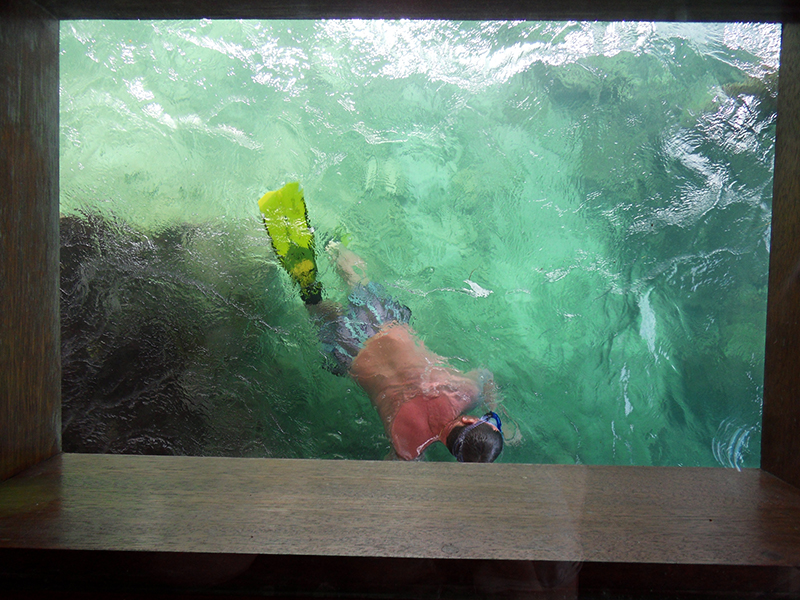 As soon as we got into our room that stood directly above the lagoon on long concrete stilts, the trekking shoes were thrown ceremoniously into a cupboard and we plunged into the warm, blue sea for a gentle swim with the ridiculously coloured fish that inhabit the inner coral reef. As far as travelling was concerned, the brakes were applied, the anchor dropped and the most strenuous activity was breathing. It’s amazing how tiring it is doing absolutely nothing.
As soon as we got into our room that stood directly above the lagoon on long concrete stilts, the trekking shoes were thrown ceremoniously into a cupboard and we plunged into the warm, blue sea for a gentle swim with the ridiculously coloured fish that inhabit the inner coral reef. As far as travelling was concerned, the brakes were applied, the anchor dropped and the most strenuous activity was breathing. It’s amazing how tiring it is doing absolutely nothing.
We galvanized ourselves to go for a two-tank dive one morning on the outer reef where we were followed by schools of back tipped reef sharks and half a dozen larger lemon sharks as we floated around the coral that had unfortunately become quite bleached by the warm sea temperatures. At twenty metres, the sea was 29c, beautifully warm for languid scuba exploration but not conducive to coral growth, although there were pockets of young life trying to adapt to living in hot seas. We were also joined by a couple of green turtles and we managed to disturb an octopus who was scavenging amongst the rocky underwater hills. While it was not the most wonderful diving we have done it was wonderful to be back in warm water again exploring the under-sea world, an environment in which Debbie’s mermaid personality takes over, gracefully sliding through the water without effort and without breathing (much to the chagrin of the instructors, she uses less air than them, forcing them to the surface long before she has finished).
On our last evening, we were treated to the local girls dancing. Captain Cook after seeing his first Tahitian dance in 1769 wrote: ‘the young girls, whenever they can collect 8 or 10 together dance a very indecent dance which they call a Timorodee, singing the most indecent songs and using the most indecent actions in the practice of which they are brought up from their earliest childhood.’ What could be a better advertisement? Regrettably, the reality is somewhat different. Miserable missionaries had the dances banned in the 1820s and, within 100 years, the established dances before 1800 were totally forgotten. The dances today are mostly performed for the tourists and it is difficult to follow the themes without knowing Tahitian but the colourful costumes, thundering drums and the swinging hips of the young women leave little doubt about the temptations that inspired the mutiny on the Bounty in 1788.

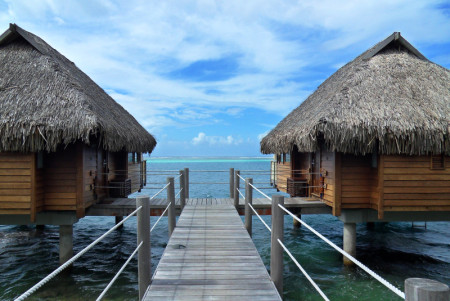
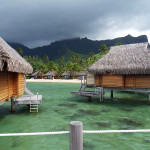
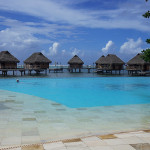
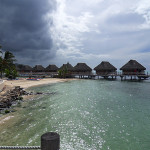
No comments yet.